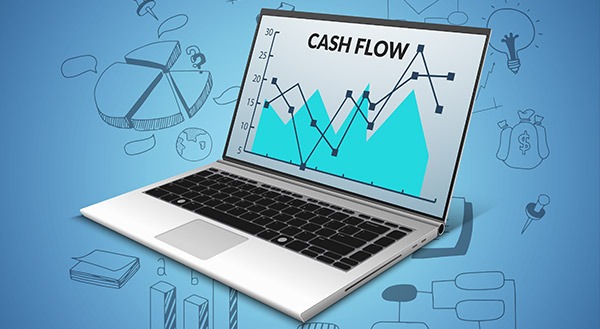
Demand forecasts – Inventory forecast model lines that are selected for cash flow forecasts.Budget register entries – Budget register entries that are selected for cash flow forecasts.Ledger transactions – Transactions where it's specified that a future posting will occur.Accounts payable – Open vendor transactions (invoices that aren't yet paid).
 Accounts receivable – Open customer transactions (invoices that aren't yet paid). Purchase orders – Purchase orders that aren't yet invoiced, and that result in physical or financial purchases. Free text invoices – Free text invoices that aren’t posted yet, and that result in financial sales. Sales orders – Sales orders that aren't yet invoiced, and that result in physical or financial sales. The following types of transactions are considered when the cash flow is calculated: The forecasting process uses transaction information that is entered in the system, and the calculation process forecasts the expected cash impact of each transaction. Cash flow forecasting integrationĬash flow forecasting can be integrated with General ledger, Accounts payable, Accounts receivable, Budgeting and inventory management. Configure the behavior for forecasts of transactions that affect the company's liquidity accounts.Īfter you've completed these tasks, you can calculate and analyze forecasts of the cash flow and upcoming currency requirements. Liquidity accounts are the company's accounts for cash or cash equivalents. Identify and list all the liquidity accounts. To obtain a forecast of the cash flow, you must complete the following tasks: You can use the cash flow forecasting tools to analyze upcoming cash flow and currency requirements, so that you can estimate the company's future need for cash.
Accounts receivable – Open customer transactions (invoices that aren't yet paid). Purchase orders – Purchase orders that aren't yet invoiced, and that result in physical or financial purchases. Free text invoices – Free text invoices that aren’t posted yet, and that result in financial sales. Sales orders – Sales orders that aren't yet invoiced, and that result in physical or financial sales. The following types of transactions are considered when the cash flow is calculated: The forecasting process uses transaction information that is entered in the system, and the calculation process forecasts the expected cash impact of each transaction. Cash flow forecasting integrationĬash flow forecasting can be integrated with General ledger, Accounts payable, Accounts receivable, Budgeting and inventory management. Configure the behavior for forecasts of transactions that affect the company's liquidity accounts.Īfter you've completed these tasks, you can calculate and analyze forecasts of the cash flow and upcoming currency requirements. Liquidity accounts are the company's accounts for cash or cash equivalents. Identify and list all the liquidity accounts. To obtain a forecast of the cash flow, you must complete the following tasks: You can use the cash flow forecasting tools to analyze upcoming cash flow and currency requirements, so that you can estimate the company's future need for cash. 
#CASHFLOW APP UPDATE#
For more information about preview releases, see Service update availability. The content and the functionality are subject to change.

Some or all of the functionality noted in this article is available as part of a preview release.







 0 kommentar(er)
0 kommentar(er)
